From car seat to booster: The laws, requirements Michigan parents should know
Summer’s here and the open road beckons. In a state like Michigan, where miles of natural lake coastline and historic small towns provide vacation outposts to suit any family’s preferences, plenty of getaways are just a car ride away.
That makes keeping kids safe and happy on the road an essential part of summer vacation. Seat belt laws first took effect in Michigan in 1985, and 94% of drivers buckle up. (Although did you know that Michigan’s seat belt laws came under major fire when they were first introduced?) These safety measures are basic: click it or ticket, as the warning goes.
But car seat laws and guidelines are a lot murkier. It can be tricky for parents or caregivers to know which are laws, which are recommendations, and what guidance applies to their child at different ages and stages.
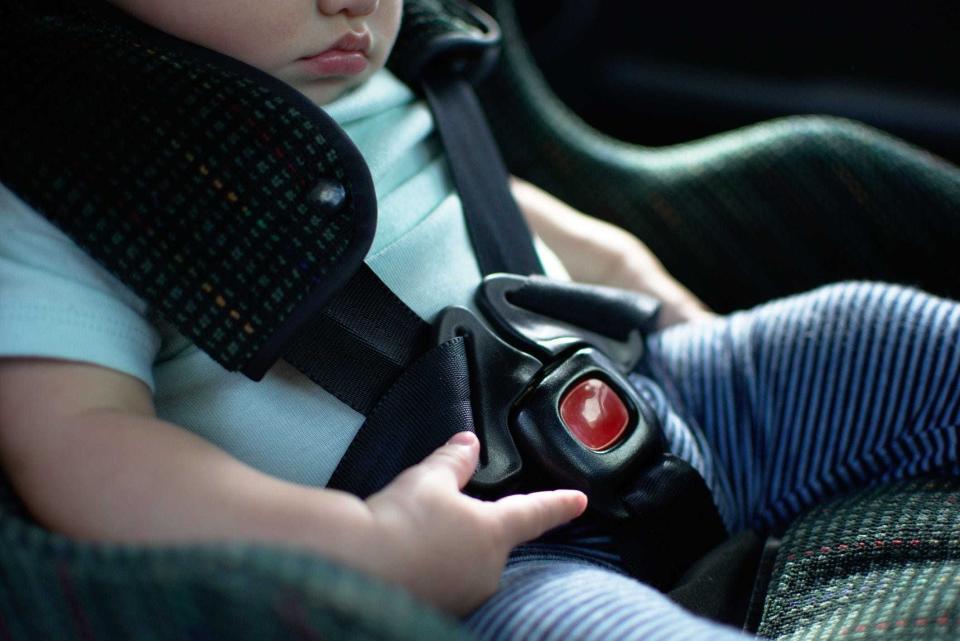
When a kid begs to move into a booster seat or a toddler whines that he wants to face forward, it can be tempting to deliver. So, when can you actually move your back-seat driver to a booster seat or let your preschooler turn her seat around?
First, the laws
According to Michigan’s Child Passenger Safety Law, children younger than 4 years old must ride in a car seat in the back seat, assuming the car has one. The only exception is if all the seats in the back of the car are already taken up by car seats for kids younger than 4, you can put a car seat in the front seat. If you do that, make sure you disable the air bag.
You are required by law to keep kids in a car seat or booster seat until they turn 8 years old, or until they reach a height of 4 feet, 9 inches. Once one of those things applies, they can sit in a regular seat with a seat belt.
Wait, those are the only laws?
Yes. Michigan law doesn’t say anything about when a child may sit in the front seat or when a car seat needs to face forward or backward.
But to keep your kid safe, there are some important recommendations to follow.
Rear-face as long as possible
First, keep your child in a rear-facing car seat as long as possible. Different car seats have different maximums for height and weight. The safest approach is to keep your little one facing backward until they exceed these height or weight ceilings.
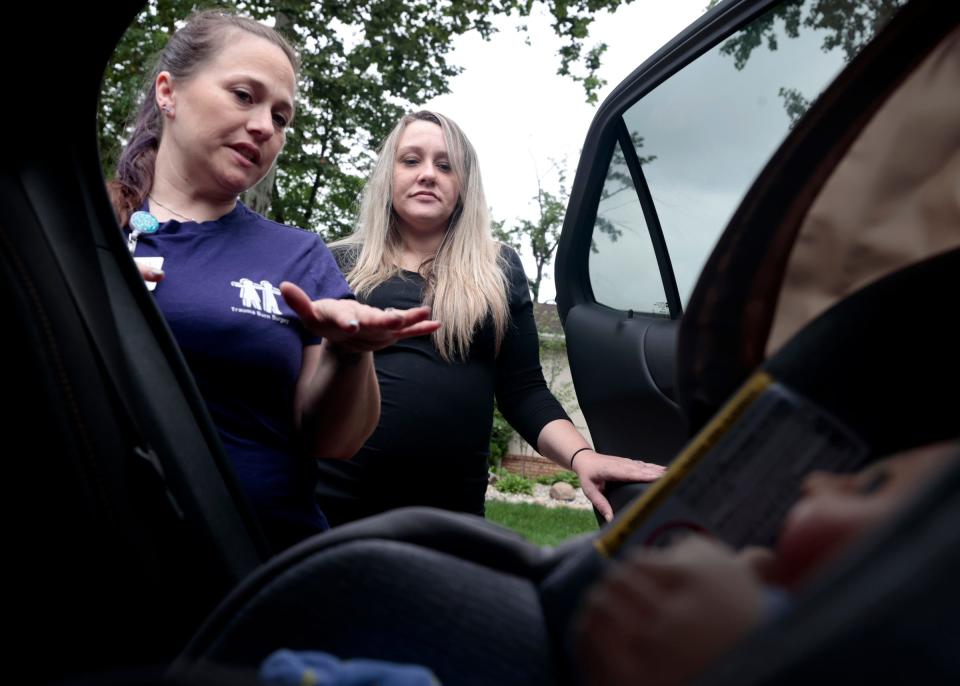
In the case of an accident, this positioning offers the most support for their heads, bones and spinal cords, which are all still developing and are more vulnerable than adults’.
"We see a lot of misuse there," said Child Passenger Safety Technician and instructor Renee Zarr, who is also the injury prevention education coordinator for the Kohl's Injury Prevention Program at Children's Hospital of Michigan. "They make the transition too soon." Zarr says caregivers think if their kid can kick the seat in front of them or have outgrown their infant seat it's OK to turn them around. Better to wait as long as possible, she advises, and install a convertible car seat facing backward.
Can I turn my kid around yet?
The minimum age to switch a child’s car seat to forward-facing is 2 years old. But car safety experts recommend postponing the big turnaround until your child is as close to 4 as possible, when his bones are more formed and his head is more proportionate vis-a-vis the rest of his body.
Car seats can often be rear-facing until your child weighs 40 or even 50 pounds and is 49 inches tall. Wow.

As for moving out of the car seat altogether and into a booster seat, again, the safest bet is to keep your child in a forward-facing car seat with a harness until she exceeds the height or weight maximum provided by the manufacturer.
Zarr says she has seen too many caregivers skip right from infant car seat to booster because the manufacturer information declares it safe for children as light as 30 pounds. Children should stay in a five-point harness seat for as long as possible. "A lot of those harnesses now are coming manufactured with a 65-pound harness, which is fantastic," Zarr said.
A good overview, with lots of additional resources, is available from the National Highway Transportation Safety Administration.
How to get your car seat checked
The safest car seat for your child is one you can use correctly every time. To make sure your car seat is installed properly, you may want to have it inspected by a professional.
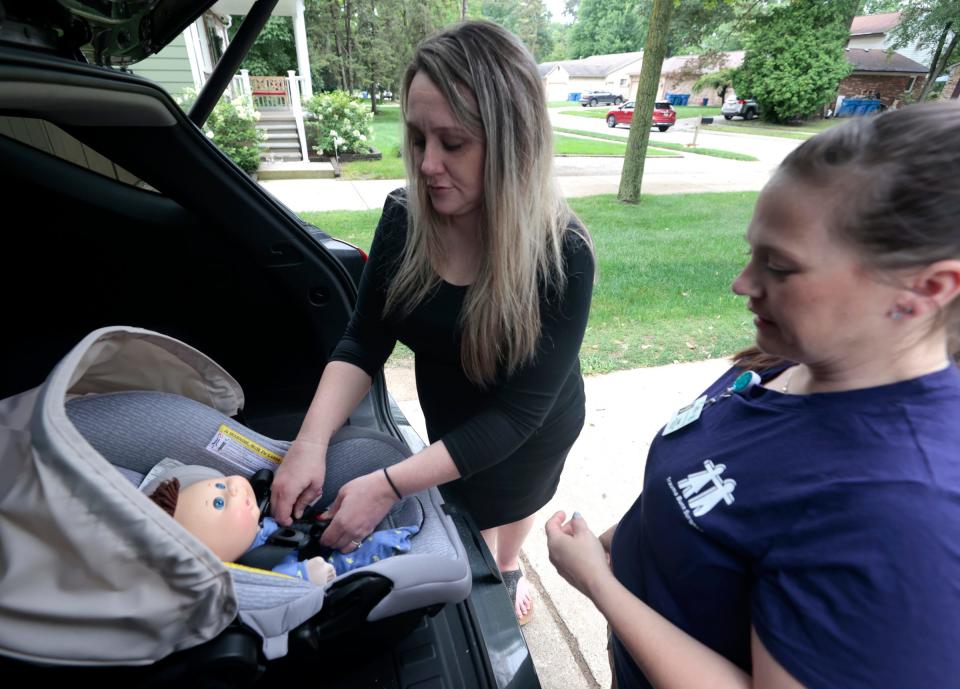
You can do this at locations in Ann Arbor, Ypsilanti, Traverse City, Detroit, Kalamazoo, Oakland County, South Haven and Centreville, though some require appointments. View the list of inspection sites here.
Some areas may also hold car seat checkup events, many of which are free. It's a good idea to bring your child along for the check so technicians can make sure they fit correctly in the seat, not just that the seat is secure and well-positioned in the car. They'll also make sure your car seat hasn't expired. They're not made of cheese, but even car seats have a use-by date.
More: State puts $8 million into SOS effort to save Michigan moms and babies
Read this before you get rid of your booster seat
Zarr says unless your kid happens to have gotten the tall gene, it's unlikely they'll hit 4 feet, 9 inches by their eighth birthday. "A lot of kids don't hit it until about 10 to 12," she said. And height is much more important than age when it comes to moving out of a booster. "What happens at 57 inches is, the seat belt will then appropriately fit over their collarbone and over their upper thighs and the hip area, which are the strong bones in our body," Zarr said.
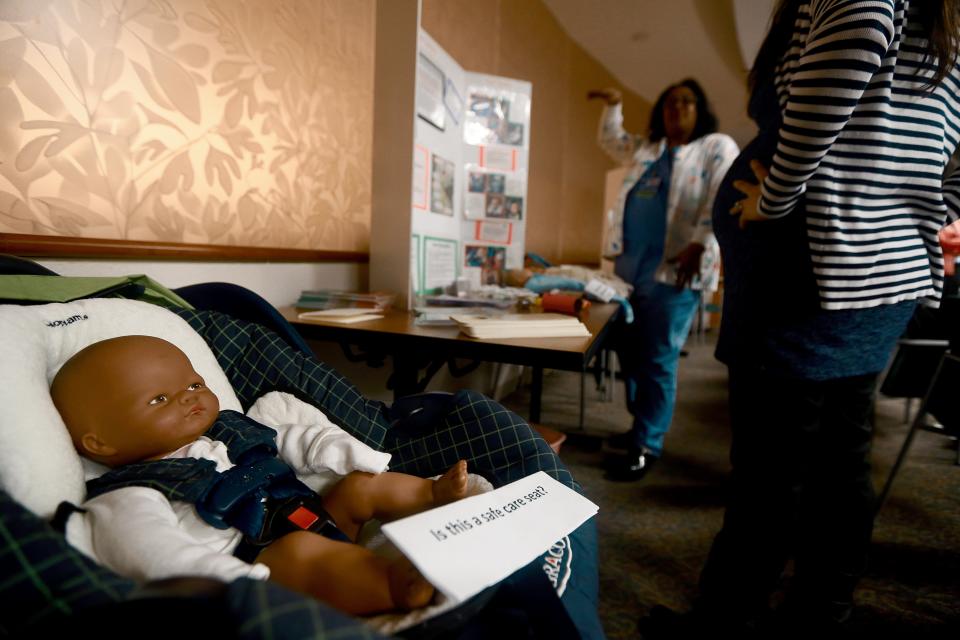
The child passenger safety technicians behind a nonprofit called Car Seats for the Littles agree that positioning and not just height is key.
They advocate a five-step check to determine whether your child can safely sit in a regular seat.
Their knees should bend comfortably and their feet should be flat on the floor.
Their butt should be all the way back in the seat.
The lap belt should lie low on their hips at the top of their thighs.
The shoulder belt should cross their collarbone.
They can comfortably sit like this for the whole car ride.
These experts say this positioning ensures the seat belt won’t cause organ damage in case of a crash, and will be comfortable enough to ensure a child doesn’t move the seat belt under their arm or behind their back.
And they say once your older child can pass this test in your car, don’t forget to check out their positioning in every car they ride in. Some, with deep seats for example, might mean the safest option is to stay in a booster.
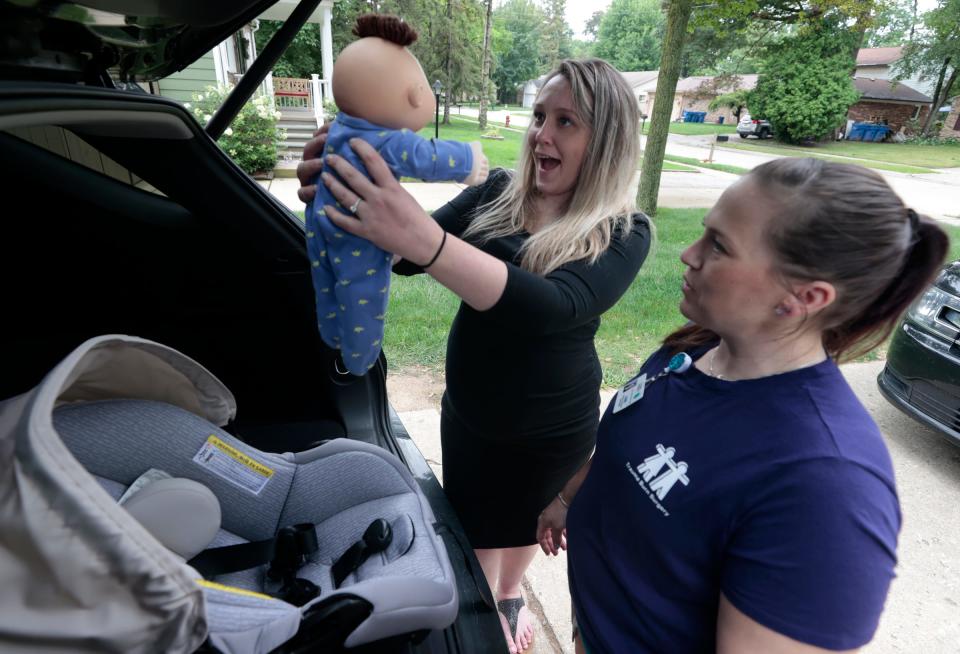
Just because your child is big enough to move out of a booster doesn’t mean they have to. Their advice: if your child fits in a booster seat, use it.
More: Families can get free supplies, resources at community baby showers in Michigan
What about letting kids ride in the front?
Although Michigan lacks laws regarding kids in the front seat, the American Academy of Pediatrics says any child younger than 13 should be restrained in the back seat. Otherwise, the force of a deploying air bag could be too intense and cause injuries.
Many experts agree that age isn’t the best determinant of front seat status, though. Height is a much better metric to use to ensure the seat belt lies properly — especially since even some shorter adults complain about it cutting across their necks.
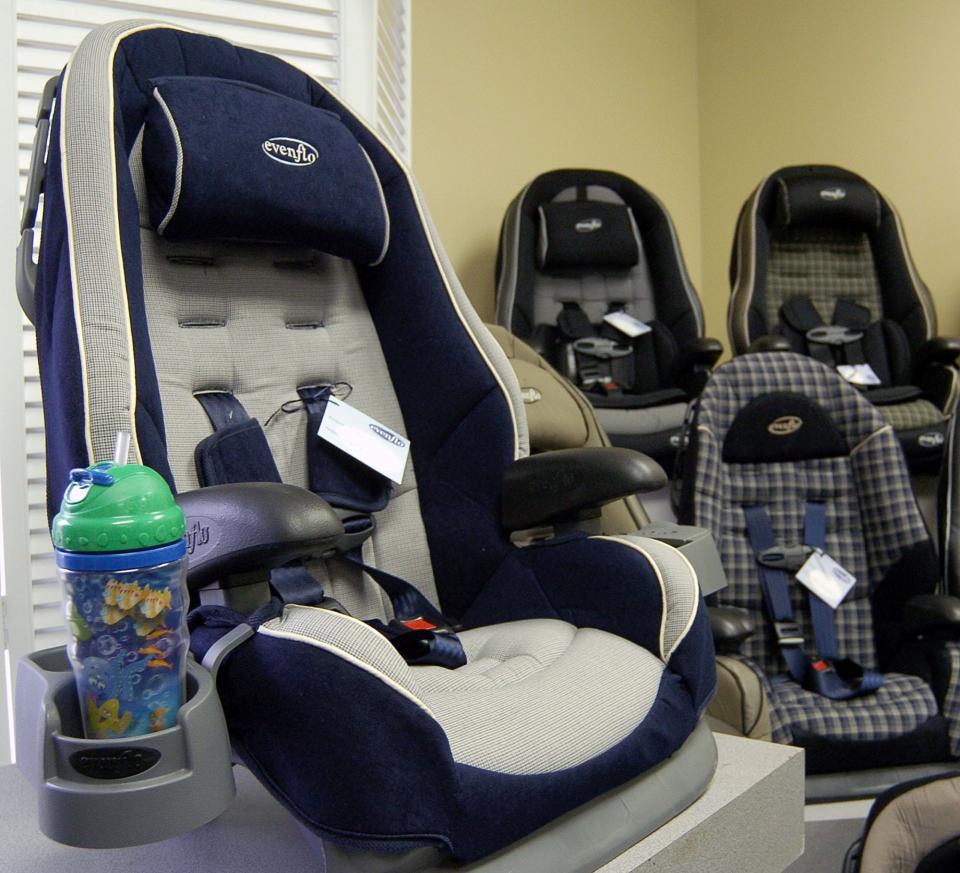
Children, no matter how loudly they complain about it, should not be in the front seat until they can sit comfortably with the lap belt lying snugly across their upper thighs and the shoulder belt crossing their collarbone.
And until they have good taste in music. Shotgun!
Jennifer Brookland covers child welfare for the Detroit Free Press in partnership with Report for America. Reach her at jbrookland@freepress.com.
This article originally appeared on Detroit Free Press: Car seat, booster seat requirements and laws in Michigan: What to know

